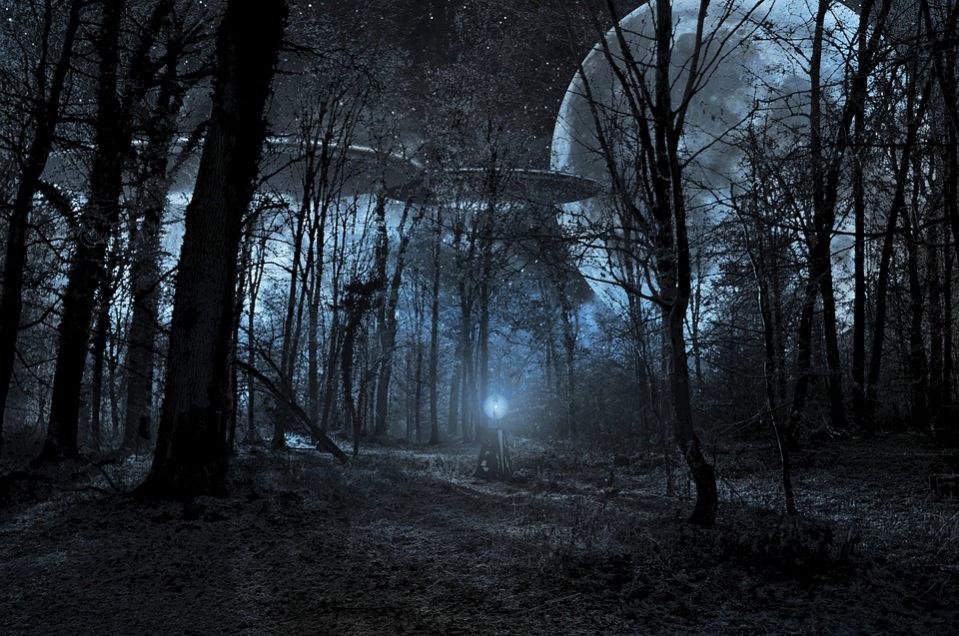
In 1955, aliens from the planet Clarion contacted a Chicago housewife to warn her that the end of the world was imminent. Psychologist Leon Festinger saw this as a unique opportunity to test a new theory about human cognition. In this week’s episode of the Futility Closet podcast we’ll follow him inside a UFO religion as it approaches the apocalypse.
We’ll also try to determine when exactly LBJ became president and puzzle over some wet streets.
Intro:
There’s a hexagon of cloud at Saturn’s north pole.
You’re not as unpopular as you think you are.
Sources for our feature on Leon Festinger:
Leon Festinger, Henry W. Riecken, and Stanley Schachter, When Prophecy Fails, 1956.
Leon Festinger, A Theory of Cognitive Dissonance, 1957.
Joel Cooper, Cognitive Dissonance: Fifty Years of a Classic Theory, 2007.
Camille Morvan with Alexander J. O’Connor, An Analysis of Leon Festinger’s A Theory of Cognitive Dissonance, 2017.
Leon Festinger, “Cognitive Dissonance,” Scientific American 207:4 (October 1962), 93-106.
Stanley Schachter, “Leon Festinger,” Biographical Memoirs, Vol. 64, National Academy of Sciences, 1994.
R.B. Zajonc, “Obituary: Leon Festinger (1919–1989),” American Psychologist 45:5 (1990), 661-662.
Michael S. Gazzaniga, “Leon Festinger: Lunch With Leon,” Perspectives on Psychological Science 1:1 (2006), 88-94.
Elliot Aronson, “Leon Festinger and the Art of Audacity,” Psychological Science 2:4 (July 1, 1991), 213-221.
Serge Moscovici, “Obituary: Leon Festinger,” European Journal of Social Psychology 19:4 (July 1989), 263-269.
Dion Scott-Kakures, “Unsettling Questions: Cognitive Dissonance in Self-Deception,” Social Theory and Practice 35:1 (January 2009), 73-106.
Stephen Cox, “An Experiment in Apocalypse,” Liberty 24:11 (December 2010) 17-22.
Louisa C. Egan, Laurie R. Santos, and Paul Bloom, “The Origins of Cognitive Dissonance: Evidence From Children and Monkeys,” Psychological Science 18:11 (November 2007), 978-983.
Merton S. Krause, “An Analysis of Festinger’s Cognitive Dissonance Theory,” Philosophy of Science 39:1 (March 1972), 32-50.
Charles G. Lord, “Was Cognitive Dissonance Theory a Mistake?” Psychological Inquiry 3:4 (1992), 339-342.
Betty M. Bayer, “Wonder in a World of Struggle?” Subjectivity 23:1 (July 2008), 156-173.
Chris Mooney, “The Science of Why We Don’t Believe Science,” Issues 95 (June 2011), 27-32.
Chris Bader, “When Prophecy Passes Unnoticed: New Perspectives on Failed Prophecy,” Journal for the Scientific Study of Religion 38:1 (March 1999), 119-131.
Lorne L. Dawson, “When Prophecy Fails and Faith Persists: A Theoretical Overview,” Nova Religio 3:1 (October 1999), 60-82.
Jon R. Stone, “Prophecy and Dissonance: A Reassessment of Research Testing the Festinger Theory,” Nova Religio 12:4 (May 2009), 72-90.
Michael Barkun, “The Occultist and the Spaceman,” in Cathy Gutierrez, Handbook of Spiritualism and Channeling, 2015.
Diana Tumminia, “How Prophecy Never Fails: Interpretive Reason in a Flying-Saucer Group,” Sociology of Religion 59:2 (Summer 1998), 157-170.
Robert W. Balch, Gwen Farnsworth, and Sue Wilkins, “When the Bombs Drop: Reactions to Disconfirmed Prophecy in a Millennial Sect,” Sociological Perspectives 26:2 (April 1983), 137-158.
Daniel Finkelstein, “Prosecutors Don’t Know How Biased They Are,” Times, Jan. 24, 2018, 27.
Matthew Syed, “Trial and Error,” New Statesman 144:5288 (Nov. 13-19, 2015), 28-31, 33.
“Leon Festinger, 69, New School Professor,” New York Times, Feb. 12, 1989.
Adam Grant, “The Virtue of Contradicting Ourselves,” New York Times, Nov. 14, 2015.
Kristin Wong, “Why It’s So Hard to Admit You’re Wrong,” New York Times, May 22, 2017.
John Tierney, “Go Ahead, Rationalize. Monkeys Do It, Too,” New York Times, Nov. 6, 2007.
Listener mail:
Simon Usborne, “The LBJ Missal: Why a Prayer Book Given to John F. Kennedy Was Used to Swear in the 36th US President,” Independent, Nov. 16, 2013.
“About the Constitution: Article II: Executive Branch,” National Constitution Center (accessed Jan. 25, 2019).
Scott Bomboy, “How JFK’s Assassination Led to a Constitutional Amendment,” Constitution Daily, Nov. 22, 2018.
“Art & History: Vice President of the United States (President of the Senate),” United States Senate (accessed Jan. 25, 2019).
“Art & History: John Tyler, Tenth Vice President (1841),” United States Senate (accessed Jan. 25, 2019).
Wikipedia, “William Henry Harrison” (accessed Jan. 25, 2019).
Wikipedia, “Presidency of John Tyler” (accessed Jan. 27, 2019).
“John Tyler,” whitehouse.gov (accessed Jan. 25, 2019).
“Amendment XXV: Presidential Disability and Succession,” National Constitution Center (accessed Jan. 25, 2019).
This week’s lateral thinking puzzle was devised by Greg. Here’s a corroborating link (warning — this spoils the puzzle).
You can listen using the player above, download this episode directly, or subscribe on Google Podcasts, on Apple Podcasts, or via the RSS feed at https://futilitycloset.libsyn.com/rss.
Please consider becoming a patron of Futility Closet — you can choose the amount you want to pledge, and we’ve set up some rewards to help thank you for your support. You can also make a one-time donation on the Support Us page of the Futility Closet website.
Many thanks to Doug Ross for the music in this episode.
If you have any questions or comments you can reach us at podcast@futilitycloset.com. Thanks for listening!
